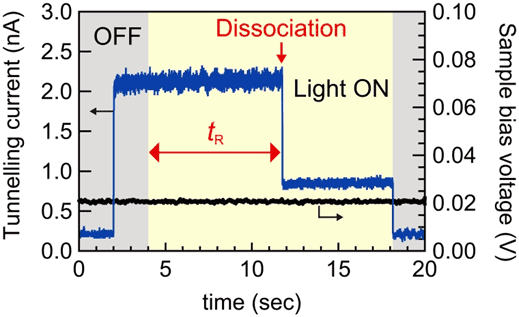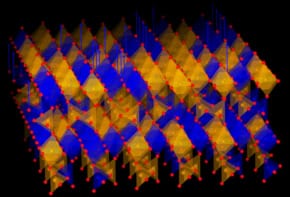
It is no secret that efficient solar energy conversion is a top priority for many scientists worldwide. A potential solution to this comes in the form of photocatalytic devices that incorporate molecular adsorbates on metal nanostructures. These photocatalysts can be chemically activated by local surface plasmon resonances – collective oscillations of electrons in metals that can be excited by electromagnetic radiation. Bonds in the molecules either form or break due to the transfer of electrons, through a complex process initiated by the decay of plasmons. An international team of researchers led by Emiko Kazuma at RIKEN has used a scanning tunnelling microscope (STM) to observe and investigate plasmon-induced reactions of single molecules in real time.
Inducing chemical reactions with surface plasmons
In metal nanostructures, surface plasmons resonate in response to specific frequencies of light and can generate strong electric fields or cause intramolecular chemical changes by exciting electrons to higher molecular orbitals. Researchers have used this phenomenon to controllably induce molecular dissociation on a range of metals. They then monitor the reaction with STM, a powerful tool that maps surface topography with atomic resolution by measuring the current that tunnels between a metal tip and the surface.
The experiment involved bringing the tip close to a metal surface onto which the team had adsorbed dimethyl disulfide (DMDS) molecules. Exciting a local surface plasmon (LSP) resonance by illuminating the area below the tip results in a strong electric field within the gap, and the nonradiative decay of the LSP excites electrons to unoccupied states in the adsorbed DMDS causing chemical changes in the molecule. The researchers used STM to observe single molecules splitting into two parts through plasmon-induced cleavage of the sulphur-sulphur bond.

Increasing the efficiency of photocatalysts
Some photocatalytic devices operate by direct photodissociation – where photons rather than plasmons induce chemical changes – to break bonds in molecules. The researchers compared molecule populations with STM both before and after irradiation to compute the efficiency of LSP-induced dissociation and found the yield to be 400 times greater than has been observed for direct photodissociation. They also analysed the wavelength dependence of the reaction to determine the dissociation mechanism for LSP-induced chemical reactions. The results show that LSP-induced dissociation is based on a direct intramolecular excitation to the lowest unoccupied molecular orbital of the anti-bonding sulphur-sulphur orbital, the same reaction pathway by which direct photodissociation operates.
An especially attractive aspect of studying LSP-induced dissociation with STM is the high temporal resolution. The tunnelling current of the STM is highly sensitive to the size of the nanogap, i.e. the tip height above the surface. If the tip height is maintained by fixing the gap resistance, the rate of the chemical reaction can be measured in real time by continuously measuring the current under irradiation with the light source. The ability to correlate spatial and temporal information with such precision is unprecedented and offers a route to controlled chemical reactions induced by LSP.
These findings offer new perspectives on plasmon-induced chemical reactions that are invaluable in the advancement of efficient solar energy collection and conversion. Further details can be found in Science.



